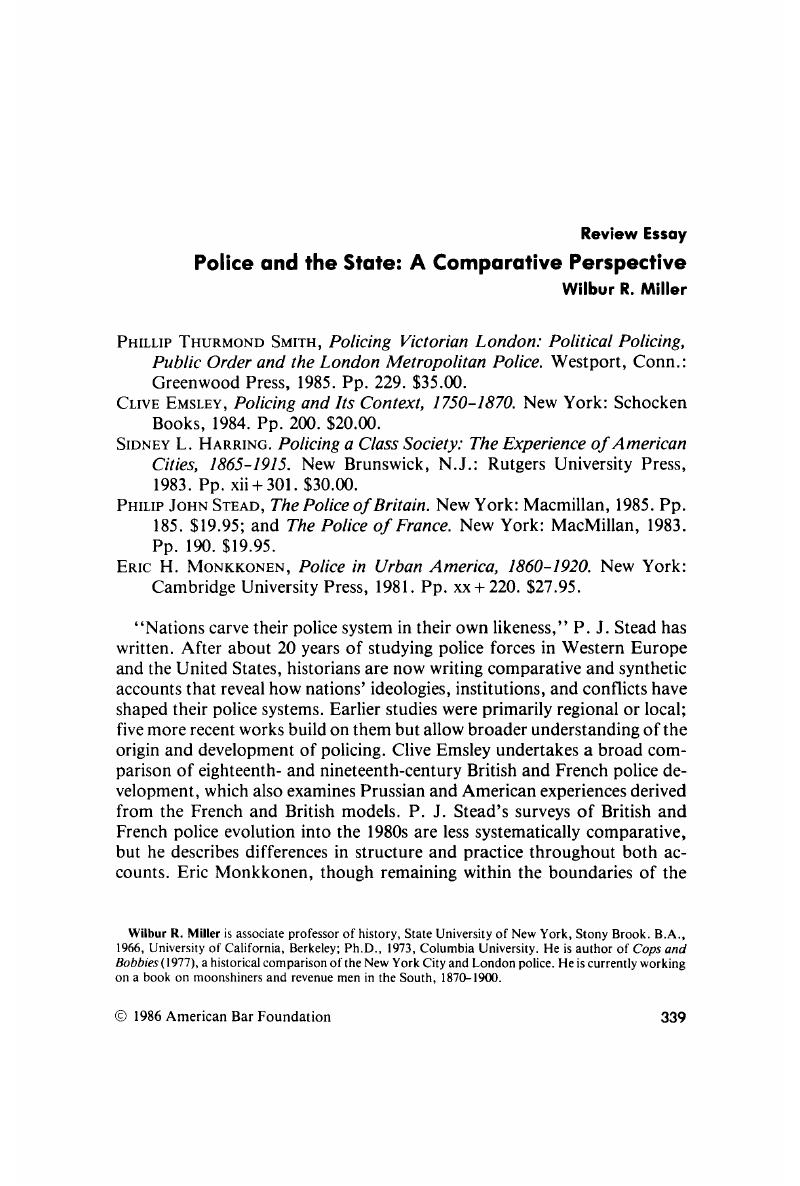Published online by Cambridge University Press: 20 November 2018

1 Turk, Austin T., Political Criminality: The Defiance and Defense of Authority 115 (Beverly Hills, Cal.: Sage Publications, 1982).Google Scholar
2 I have developed this argument in my Cops and Bobbies: Police Authority in New York and London, 1830–1870 (Chicago: University of Chicago Press, 1977); it is summarized in Emsley at 149.Google Scholar
3 Also from Cops and Bobbies, supra note 2; Emsley at 149.Google Scholar
4 Monkkonen develops a statistical analysis to support his argument for the shift from general “class management” to crime control. Between 1860 and 1920, the number of arrests per capita actually declined, contrary to the conventional image of disorderly industrial cities. Monkkonen accounts for the decline by a reduction of public order or police-initiated arrests (drunkenness, crimes without victims). However, his close analysis of the statistics seems to vitiate the force of his own contention: only three cities (New York, Chicago, Washington, D.C.) experienced marked decline of both arrests in general and public order arrests in particular. All others experienced a slight increase in overall per capita arrests and an “an emphasis by the police on public order offenses—crimes without victims” (at 137). Consequently, Monkkonen scrupulously admits that he must “qualify ” his generalization about arrests indicating the shift from class management to crime control (at 138). He has a good case in statistics reporting the decline of lodging tramps and recovering lost children; it does not seem as strong when he asserts that the police paid less attention to public order offenses.Google Scholar